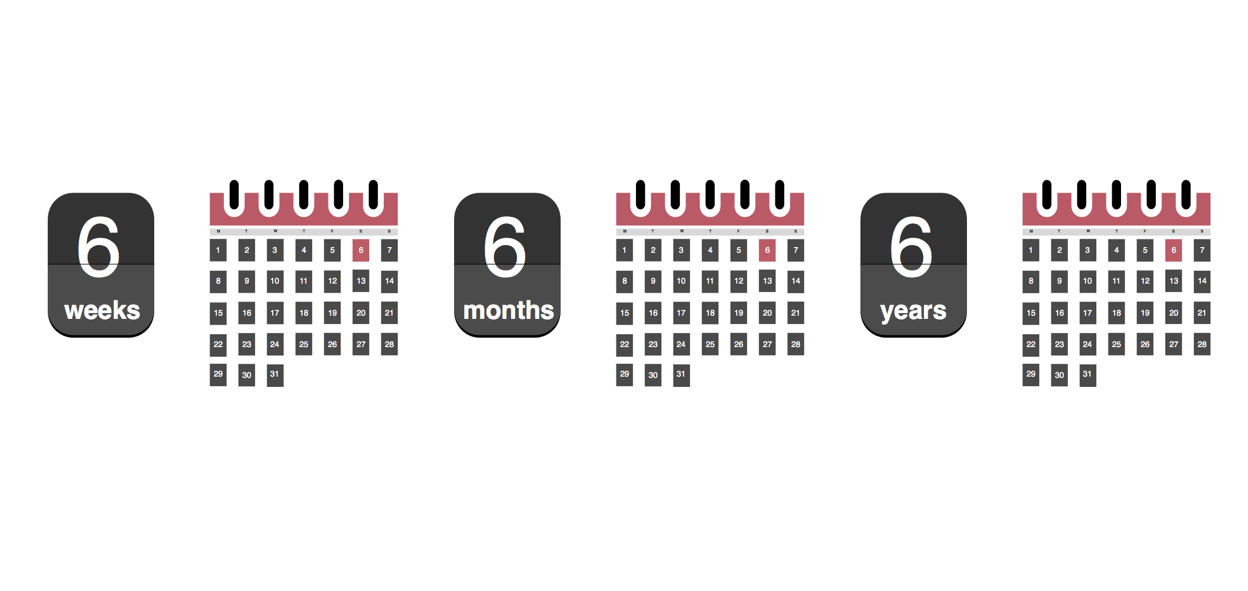
The 666 roadmap
This article proposes a three-timeline approach to product roadmap planning for startups, focusing on the next 6 years, next 6 months, and next 6 weeks. The 6-year timeline represents the long-term vision, considering potential future changes driven by the product and external trends. The 6-month timeline outlines the concrete plan for making significant progress towards the vision, acknowledging that approximately 25% of this plan will likely evolve based on new insights. The 6-week timeline encompasses the immediate plan, with detailed designs already underway, and is subject to weekly updates. The author advocates for this approach over other timelines, specifically criticizing 18 months and 2 years as being too far in the future for reliable prediction but not far enough to witness significant change. This structure aims to ensure a balance between ambitious vision and concrete execution, while adapting to the dynamic nature of startup environments.
If you work in a startup, a really effective way of thinking about your product roadmap is over three timelines: the next 6 years, next 6 months, and next 6 weeks.
When I worked as a product manager at Facebook, some people in the team used to advocate thinking in two timelines: the next 6 months, and the next 20 years. 20 years was your vision, 6 months was your plan.
I loved this, but for most startups, 20 years is too long for the vision, and 6 months is too long for the concrete plan. Running the product team at Intercom, I’ve long been an advocate of thinking in three timelines when planning what to build.
The next 6 years
Your mind’s eye view of the world 6 years from now, taking into account how it will have changed because of the change you enacted, and how it will have changed based on plotting today’s existing trends in a straight/exponential line into the future.
The next 6 months
Your plan for building things that will make a significant impact on your journey towards the change you want to enact in the world. When you look at what you will build within 6 months time you think “we’re making great progress”. This however, is subject to change. 6 months from now about 50–75% might be built, and the other 25% is things you hadn’t thought of before. This is a rolling timeline that is updated every couple of months.
The next 6 weeks
These are very concrete. This is your immediate plan. This is what your team know intimately. You know exactly what’s being built. Design work is well underway. This is a rolling timeline that is updated every week or two.
As an aside, I think 2 years is the worst timeline to work towards, and 18 months isn’t much better. It isn’t far enough into the future to see significant change in how the world works, but it’s far enough such that it is highly unpredictable e.g. it’s two new versions of iOS and Android away.
Finally, it turns out aligning the name of your product roadmap process with the devil has lots of humorous side benefits. :)
Product & Design 6 min read
RICE: Simple prioritization for product managers
Prioritization is a perennial challenge when building a product roadmap. How do you decide what to work on first? If…
AI & Automation 18 min read
The ultimate guide to knowledge management in the age of AI
Everything you need to know about effective, AI-optimized customer service knowledge management, in one comprehensive guide.
Customer Engagement 32 min read
The ultimate marketing technology stack
What are the ingredients of a modern marketing technology stack? And how do you start building your own martech stack? We asked some of the world’s fastest-growing companies to find out.